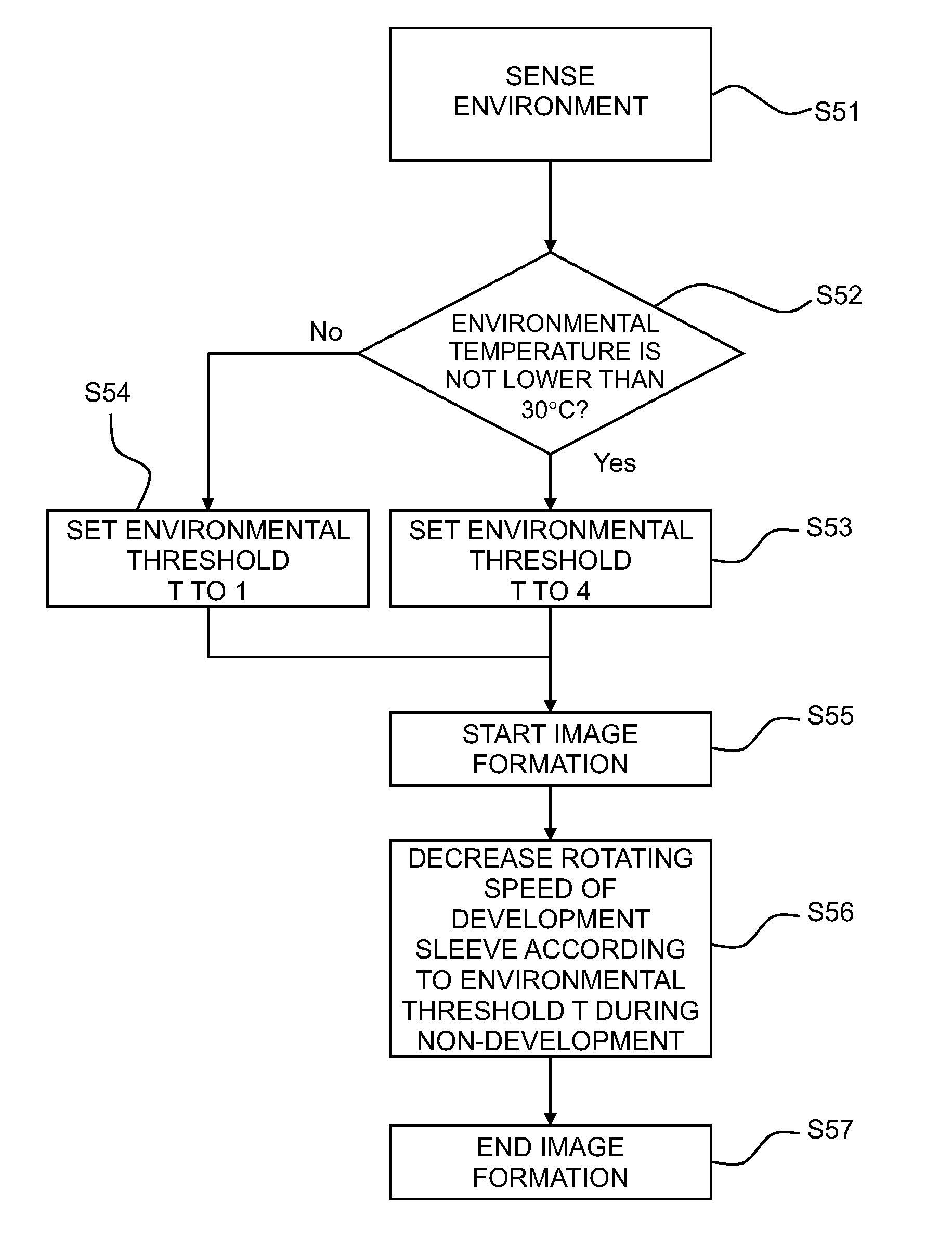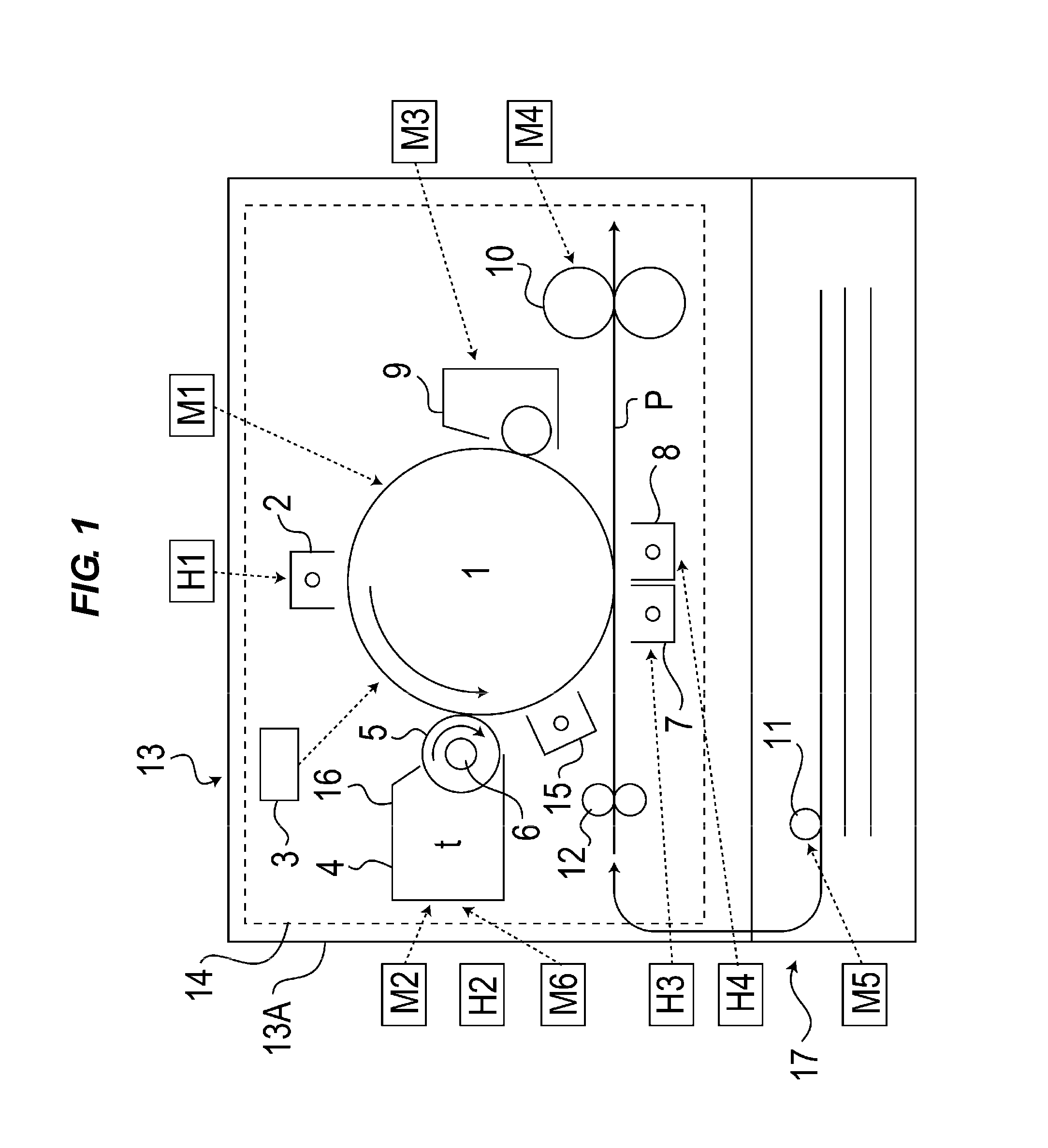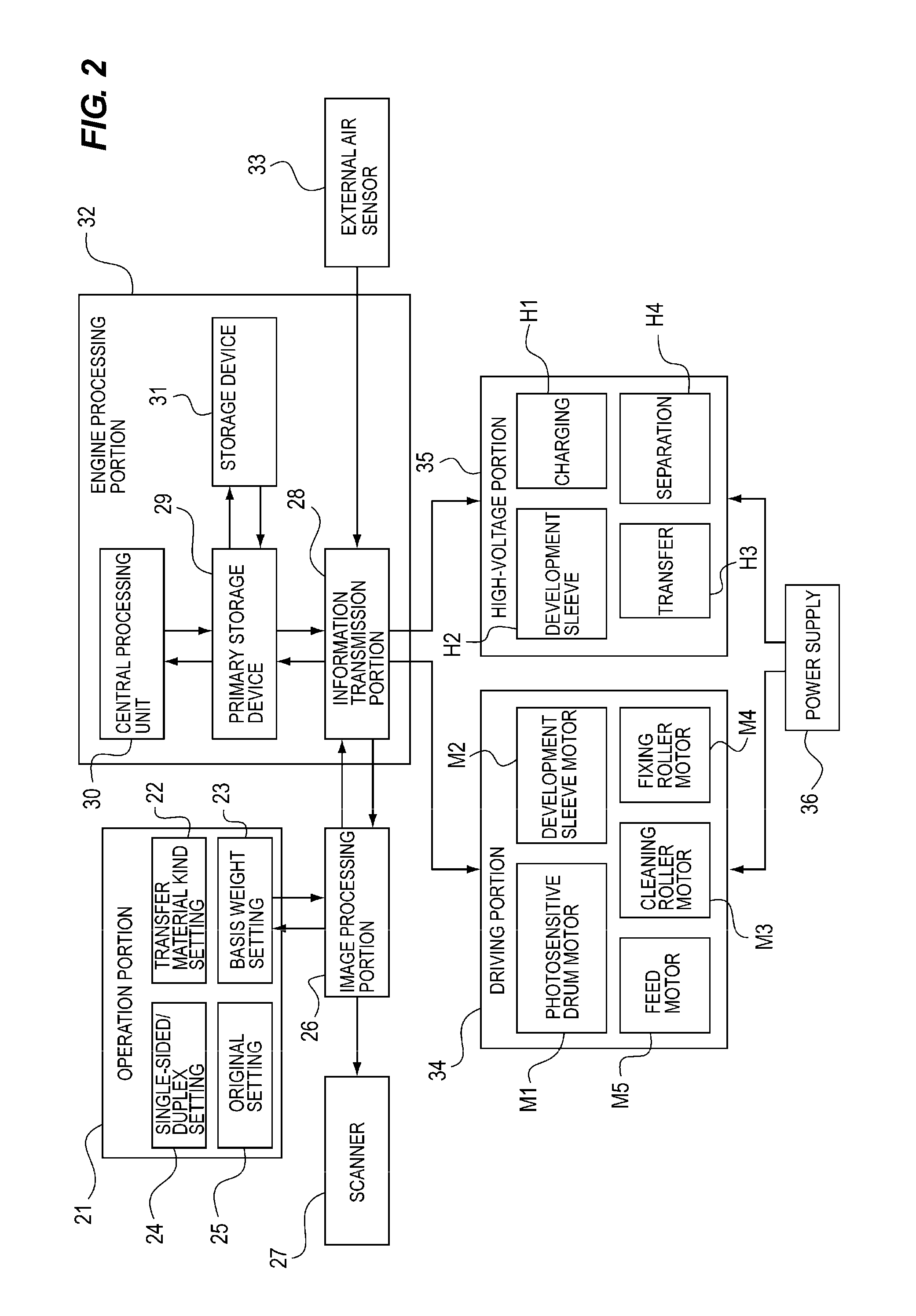Image forming apparatus
- Summary
- Abstract
- Description
- Claims
- Application Information
AI Technical Summary
Benefits of technology
Problems solved by technology
Method used
Image
Examples
first embodiment
[0021]FIG. 1 is a sectional view illustrating a configuration of an image forming apparatus 13 according to a first embodiment of the present invention. The image forming apparatus 13 that is an “image input / output apparatus” has a duplex printing function in which an electrophotographic image forming process is used. As illustrated in FIG. 1, the image forming apparatus 13 includes an image forming apparatus main body (hereinafter, simply referred to as an “apparatus main body”) 13A, and an image forming portion 14 is provided in the apparatus main body 13A in order to form an image in a transfer material P. The image forming portion 14 includes a photosensitive drum 1 that is an “image bearing member”, and the photosensitive drum 1 rotates in an arrow direction of FIG. 1. The image forming portion 14 includes a charger 2 that is a “primary charger”, an exposure device 3, a development device 4, a post-charger 15, a transfer charger 7, a separating charger 8, and a cleaning device ...
second embodiment
[0062]FIG. 5 is a flowchart illustrating a control process of an engine processing portion 32 according to a second embodiment of the invention. When the user selects the basis weight of the transfer material P, the engine processing portion 32 delays the rotation of the development sleeve 5 in the non-development time for the large basis weight of the transfer material P. The signal transmission and reception will be described with reference to a flowchart of FIG. 5 in addition to the sectional view of the image forming apparatus of FIG. 1 and the block diagram of the signal transmission of FIG. 2. The image forming operation is described below.
[0063]When the user inputs the basis weight of the transfer material P by the basis weight setting 23 (see FIG. 2) from the operation portion 21, the engine processing portion 32 starts the control (S1). The engine processing portion 32 determines whether the basis weight of the transfer material P is not lower than 210 g / cm2 (S2). When dete...
third embodiment
[0078]FIG. 6 is a timing chart illustrating a control process of an engine processing portion 32 of an image forming apparatus according to a third embodiment of the invention. A line N1 expresses both the development time and the non-development time. A line N2 and a line N3 express the driving signal of the development sleeve. In the image forming apparatus of the third embodiment, the same configuration and effect as those of the image forming apparatus 13 of the first and second embodiments are designated by the same numerals, and the description will not be repeated. The image forming apparatus of the third embodiment differs from the image forming apparatus of the first and second embodiments in that the number of times at which the rotation speed of the development sleeve 5 in the non-development time is increased.
[0079]In the third embodiment, the time the rotation speed of the development sleeve 5 in the non-development time is reduced is optimized when the basis weight of ...
PUM
 Login to View More
Login to View More Abstract
Description
Claims
Application Information
 Login to View More
Login to View More - R&D
- Intellectual Property
- Life Sciences
- Materials
- Tech Scout
- Unparalleled Data Quality
- Higher Quality Content
- 60% Fewer Hallucinations
Browse by: Latest US Patents, China's latest patents, Technical Efficacy Thesaurus, Application Domain, Technology Topic, Popular Technical Reports.
© 2025 PatSnap. All rights reserved.Legal|Privacy policy|Modern Slavery Act Transparency Statement|Sitemap|About US| Contact US: help@patsnap.com



